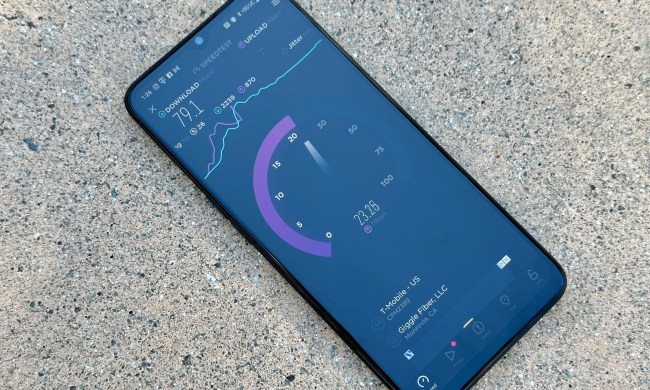
Straight Path, which acquired — but failed to make use of — spectrum it purchased 15 years ago, was expected to close a deal with AT&T. Ma Bell announced a bid of $1.6 billion for Straight Path in April, but folded its hand when Verizon offered more.
Verizon ponied up for good reason. Straight Path maintains a valuable portfolio of millimeter wave spectrum — frequencies with narrower-than-average lengths ideal for 5G deployment. And it has them in a lot of places, including all of the top 40 markets in the U.S.
Millimeter wave isn’t perfect — it can’t penetrate physical objects like walls and trees, and it has a limited range. But it’s plentiful compared to the low-frequency bands in use by 4G networks, and can be used in conjunction with other spectrum where available. T-Mobile, for example, has said it will use a combination of low-band 600MHz spectrum and high-band millimeter waves for its 5G network.
5G can reach speeds far surpassing 1Gbps, and features improved latency, coverage, and efficiency compared to 4G. Verizon’s finalized
In a 5G test last year, Verizon demonstrated multiple 4K TVs streaming video at once — enough bandwidth to download Guardians of the Galaxy in 15 seconds, compared to the 6 minutes it takes on current 4G LTE networks.
The Straight Path acquisition is part of Verizon’s broader 5G rollout.
In February, the carrier announced that it would begin customer trials of 5G technology in ten U.S. cities — Ann Arbor, Michigan; Atlanta, Georgia; Bernardsville, New Jersey; Brockton, Massachusetts; Denver, Colorado; Miami, Florida; Seattle, Washington; Washington DC; and Dallas and Houston in Texas. In partnership with Samsung, Ericsson, Intel, and Qualcomm, it installed
Verizon isn’t the only one pursuing 5G trials. This year, AT&T will begin streaming DirecTV to residential customers, reportedly as part of a “quad play” bundle of television service,
That could be good news for your cable bill. According to the Federal Communications Commission’s 2015 Broadband Progress Report, 51 percent of Americans only have one option for 25Mbps or higher home internet service.
Most carriers are targeting 2020 for widespread launch, after the ITU finalizes 5G’s technical specifications. But others are confident they can deploy it sooner.
AT&T, for example, plans to expand residential and small business trials in the second half of this year, ahead of a “standards-based” rollout as soon as 2018. And Sprint is shooting to launch its 5G network by “late 2019.”


